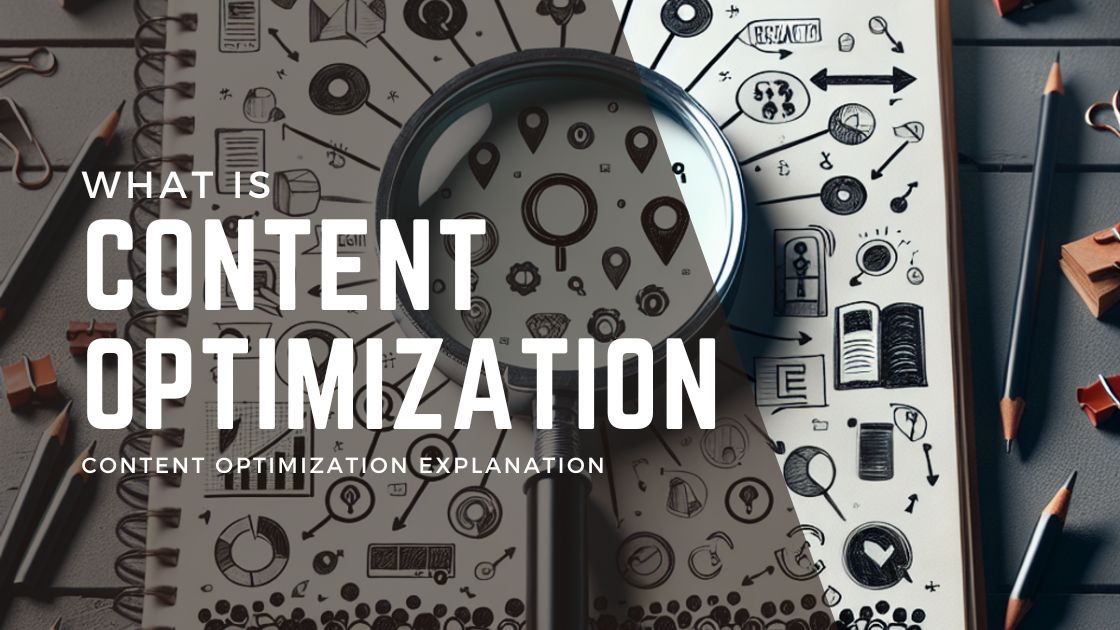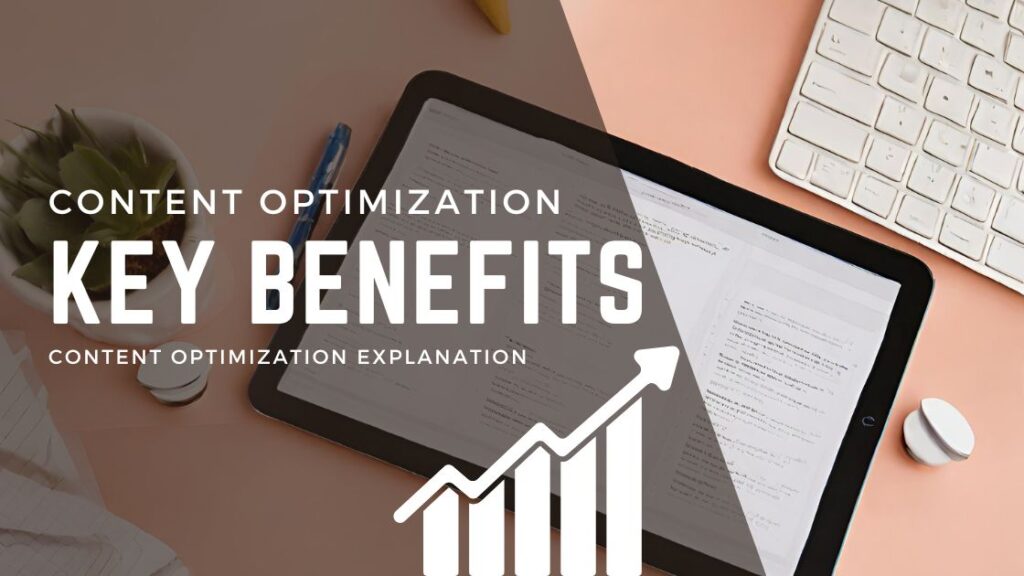
Content optimization is the process of refining and enhancing digital content to improve its engagement and effectiveness. It involves ensuring content quality, including keywords, writing compelling titles and meta descriptions, and earning authoritative backlinks.
Content optimization is important because it ensures search engines and users can understand your content easily, improves search engine rankings, attracts and engages the right audience, and builds trust with your audience. It also boosts user experience by providing relevant and valuable information to visitors, increases social media shares and engagement, improves website loading speed, and assists in building a strong internal linking structure, enhancing the overall navigation and usability of your website.
By optimizing your content, you can outrank competitors, position yourself for content marketing success, and attract potential customers. To have a successful content strategy, it is crucial to ensure both a high-quality page experience and technical SEO.
Understanding Content Optimization
Definition of Content Optimization
Content optimization, in simple terms, refers to the process of improving and maximizing the visibility and performance of your online content. It involves various strategies and techniques that are aimed at making your content more appealing to both search engines and users.
The Purpose of Content Optimization
The main purpose of content optimization is to increase the visibility of your content in search engine results pages (SERPs). By optimizing your content, you increase the likelihood of your website appearing on the first few pages of search results. This is important because studies have shown that the majority of users rarely venture beyond the first page of search results.
Additionally, content optimization also aims to improve user experience by making your content more engaging, informative, and relevant to your target audience. This not only keeps users on your site for longer, but it also encourages them to take desired actions, such as making a purchase or subscribing to your newsletter.
Key Benefits of Content Optimization

Enhancing Search Engine Visibility
When you optimize your content, you make it easier for search engines to understand and index your website. This, in turn, improves your chances of ranking higher in search results when users search for relevant keywords or phrases. Higher visibility in search results leads to increased organic traffic, which can ultimately translate into more leads and sales for your business.
Increasing Organic Traffic
Organic traffic refers to the visitors that land on your website through unpaid, natural search engine results. Content optimization plays a crucial role in attracting organic traffic by ensuring that your website is easily discoverable by search engines. By targeting relevant keywords and optimizing your content around them, you can attract highly relevant organic traffic to your site.
Improving User Experience
User experience is a key factor in determining the success of any online platform. By optimizing your content to be user-friendly and engaging, you can provide a positive experience for your visitors. This means creating content that is easy to navigate, visually appealing, and provides value to the user. When users have a positive experience on your site, they are more likely to stay longer, explore other pages, and eventually convert into customers or subscribers.
Boosting Conversion Rates
Content optimization can significantly boost your conversion rates by attracting the right audience and encouraging them to take action. By optimizing your content to align with user intent and expectations, you can increase the likelihood of users converting into customers. This can be achieved through various techniques such as persuasive copywriting, clear calls to action, and well-placed conversion elements.
Why Content Optimization Matters
Importance of Ranking Higher on Search Engine Results Pages (SERPs)
Ranking higher on search engine results pages (SERPs) is crucial for attracting organic traffic. Studies have shown that the majority of users click on one of the top three results on the first page of search results. By optimizing your content, you increase your chances of appearing in those top spots, thereby driving more traffic to your website.
Meeting User Intent and Expectations
When users search for information online, they have a specific intent and expectation. Content optimization ensures that your content aligns with the user’s intent and provides the information they are looking for. By optimizing your content to be highly relevant and informative, you increase the likelihood of satisfying user intent and keeping users engaged on your site.
Staying Ahead of the Competition
In today’s competitive online landscape, staying ahead of the competition is essential. Content optimization allows you to differentiate yourself from your competitors by providing better quality, more relevant, and engaging content. By consistently optimizing and improving your content, you can establish yourself as a leader in your industry and attract loyal customers who value your expertise.
How to Optimize Your Content
Keyword Research and Analysis
Keyword research is the foundation of content optimization. It involves identifying the right keywords and phrases that your target audience is using to search for information online. By conducting thorough keyword research, you can uncover valuable insights about your audience’s search behavior and preferences.
Once you have identified your target keywords, you can optimize your content around them. This includes incorporating the keywords naturally into your content, such as in the title, headings, and throughout the body of your text.
On-Page Optimization Techniques
On-page optimization refers to the various techniques you can use to optimize the elements on your web pages. This includes optimizing your titles and headings, using descriptive URLs, formatting your content for easy readability, and optimizing images and other media elements.
By implementing on-page optimization techniques, you make it easier for search engines to understand and index your content, and also improve the overall user experience on your website.
Crafting Engaging and High-Quality Content
Content optimization goes beyond just keyword placement. It also involves crafting engaging and high-quality content that provides value to your target audience. This means creating informative and well-researched articles, guides, videos, or any other form of content that is relevant to your audience’s needs and interests.
Engaging content not only attracts more visitors to your site but also encourages them to spend more time on your pages and interact with your content. This can increase the likelihood of conversions and enhance your overall online presence.
Optimizing Meta Tags and Descriptions
Meta tags and descriptions are HTML elements that provide brief summaries of your web pages to search engines. Optimizing these elements involves creating concise and compelling descriptions that accurately reflect the content on your pages. This can improve click-through rates from search results and increase the visibility of your content.
Internal and External Link Building
Link building is an essential aspect of content optimization. Internal linking involves linking to other relevant pages within your website, while external linking involves linking to reputable and authoritative websites. Both types of linking are important for providing additional context to search engines and users, and for improving the overall user experience on your site.
Mobile-Friendly Optimization
With the increasing dominance of mobile devices, optimizing your content for mobile is crucial. This includes ensuring that your website is responsive and mobile-friendly, and that your content displays correctly on different screen sizes. Mobile-friendly optimization is not only important for SEO purposes but also for providing a seamless experience for your mobile users.
User Engagement and Social Sharing
Engaging your audience and encouraging social sharing of your content is another important aspect of content optimization. This involves creating content that is shareable and encourages users to interact with it. You can also include social sharing buttons to make it easy for users to share your content on their preferred social media platforms.
By maximizing user engagement and social sharing, you can increase the visibility and reach of your content, and attract more traffic to your website.
Tools for Content Optimization
WisperSEO
WisperSEO is an AI-powered tool that assists in creating SEO-optimized content quickly and easily. It offers features such as content topic generation, SERP analysis, and SEO optimization. The tool provides AI-driven insights to help optimize content and is designed to enhance productivity and streamline the content creation process.
Google Search Console
Google Search Console is a free tool provided by Google that allows you to monitor and optimize your website’s presence in search results. It provides valuable insights into your website’s performance, including search queries, click-through rates, and indexing issues. By utilizing Google Search Console, you can identify areas for improvement and track the success of your optimization efforts.
Google Analytics
Google Analytics is another free tool provided by Google that allows you to track and analyze various aspects of your website’s performance. This includes monitoring traffic sources, user behavior, conversion rates, and much more. By utilizing Google Analytics, you can gain valuable insights into your audience’s preferences and behaviors, and make data-driven decisions to optimize your content.
Yoast SEO Plugin
Yoast SEO is a popular WordPress plugin that helps you optimize your content directly within your WordPress dashboard. It provides various features and tools to improve your website’s SEO, including keyword optimization, readability analysis, and metadata management. The plugin also generates XML sitemaps and integrates with social media platforms to streamline your content optimization efforts.
SEMRush
SEMRush is an all-in-one digital marketing tool that provides insights into your website’s SEO, paid advertising, social media, and content marketing efforts. It allows you to perform in-depth keyword research, analyze your competitors’ strategies, and track your website’s visibility in search results. By utilizing SEMRush, you can optimize your content more effectively and stay ahead of the competition.
MOZ
MOZ is another comprehensive SEO tool that offers a wide range of features to help you optimize your content and improve your website’s search visibility. It provides keyword research, link analysis, site auditing, and rank tracking functionalities, among others. MOZ also offers valuable educational resources and community support to help you stay up-to-date with the latest SEO trends and best practices.
Implementing an Effective Content Optimization Strategy
Setting Clear Goals and Objectives
Before embarking on your content optimization journey, it is important to set clear goals and objectives. This includes defining what you want to achieve with your content optimization efforts, such as improving search rankings, increasing organic traffic, or boosting conversion rates. By setting clear goals, you can measure the success of your optimization strategy and make informed decisions for future improvements.
Conducting Content Audits and Reviews
A content audit involves analyzing and evaluating your existing content to identify strengths, weaknesses, and areas for improvement. This includes assessing the relevance, performance, and quality of your content, as well as identifying gaps and opportunities. By conducting regular content audits and reviews, you can ensure that your content is up-to-date, well-optimized, and aligned with your overall marketing objectives.
Utilizing Data and Analytics
Data and analytics play a crucial role in content optimization. By analyzing data from tools like Google Search Console and Google Analytics, you can gain valuable insights into your audience’s behavior, preferences, and search patterns. This can help you identify areas for improvement, uncover new keyword opportunities, and make data-driven decisions for optimizing your content.
Regularly Updating and Maintaining Content
Content optimization is an ongoing process that requires regular updates and maintenance. This includes regularly reviewing and updating old content, optimizing new content before publishing, and keeping up with the latest SEO trends and best practices. By continuously optimizing and improving your content, you can ensure that your website remains relevant, visible, and engaging to both search engines and users.
Conclusion
Content optimization is a vital component of a successful online presence. By understanding the concept of content optimization and its key benefits, you can take proactive steps to improve your search engine visibility, increase organic traffic, enhance user experience, and boost conversion rates. By utilizing tools and strategies for content optimization, you can stay ahead of the competition and establish yourself as an authority in your industry. Remember, content optimization is an ongoing process, so regularly reviewing and optimizing your content is essential for long-term success.